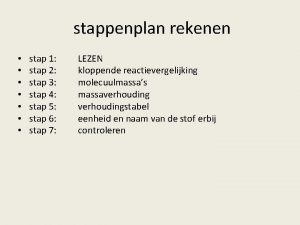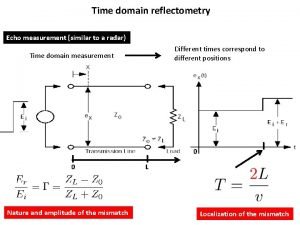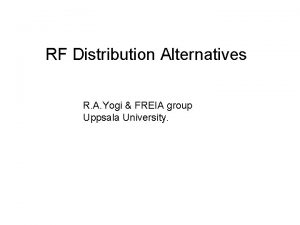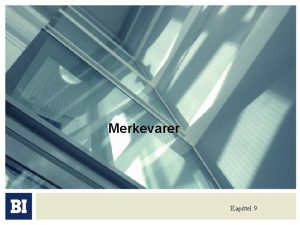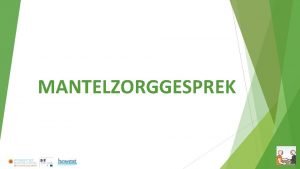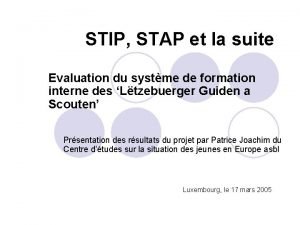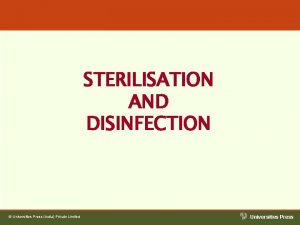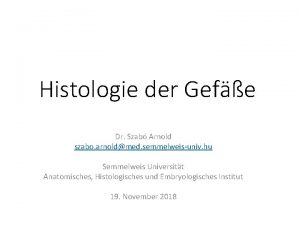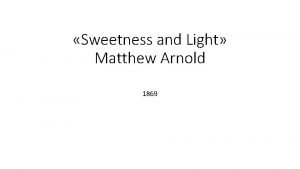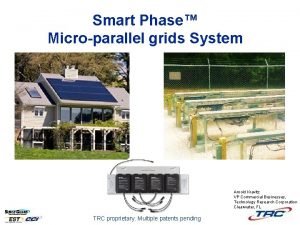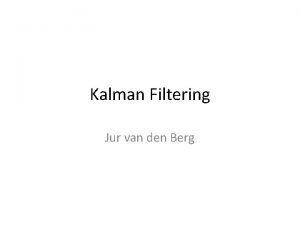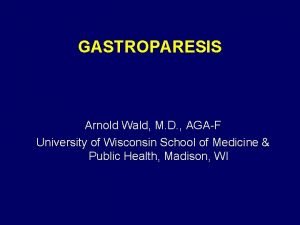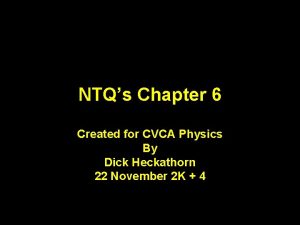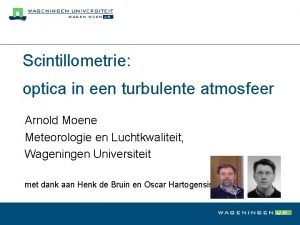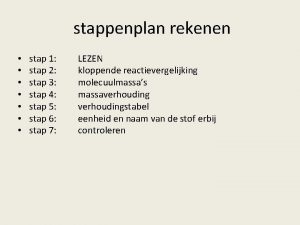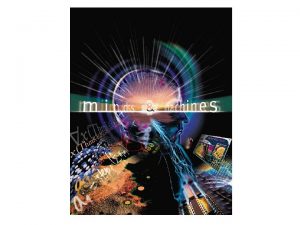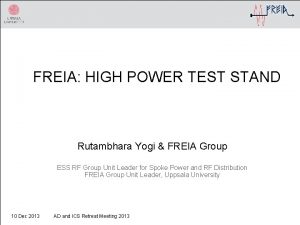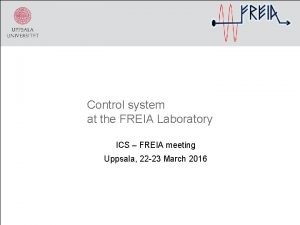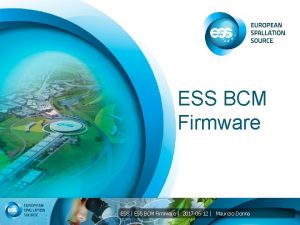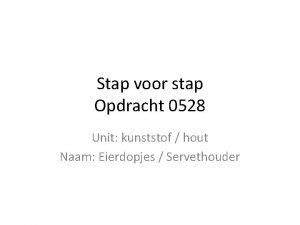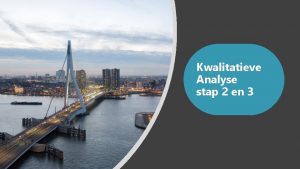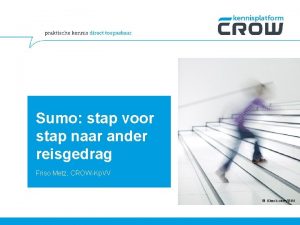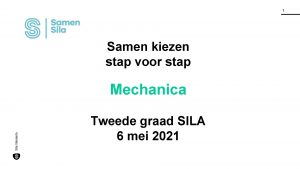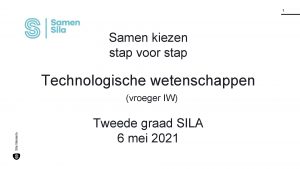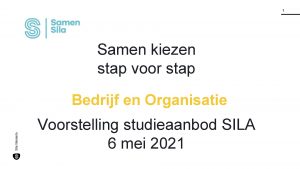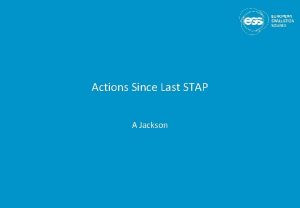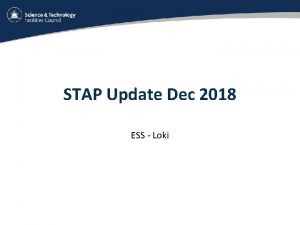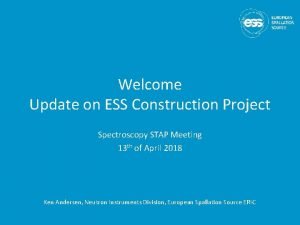FREIA Update ESS Reflectometry STAP Tom Arnold FREIA





















- Slides: 21

FREIA Update ESS Reflectometry STAP Tom Arnold FREIA Instrument Scientist www. europeanspallationsource. se

Progress Update • Neutron Instrument proposal SAC May 2014 • Tollgate 1 STC October 2014 – Proposal accepted into ESS baseline • Phase 0: January 2015 – October 2016 – Scope setting: 17 October 2016 • Phase 1: October 2016 – January 2018 – New Instrument Scientist started November 2017 – Tollgate 2: 31 st January 2018 • TG 2+ ~ 1 year period prior to formal commitment by ISIS – Feasibility studies into choppers, 3 -slits system & neutronics • Hot beam commissioning in 2024? 2

Outcome of Scope Setting I. High-Intensity Specular and Off-specular Reflection 50% of experiments II. Sample Environment ALL experiments III. High-resolution Specular and Off-Specular Reflection ~50% IV. Grazing Incidence SANS 30 -40%? V. Inverted Beam Geometry at least 25% VI. Fast kinetic measurements (ms-s) with broad Q-range ~50% VII. Polarized time-of-flight (TOF) neutron reflection 15% but could grow

Outcome of Scope Setting I. High-Intensity Specular and Off-specular Reflection 50% of experiments II. Sample Environment ALL experiments a. Essential sample environments for commissioning b. Day 1 sample environments for minimal user programme c. Full suite of specialised sample environments To be provided from operations III. High-resolution Specular and Off-Specular Reflection ~50% IV. Grazing Incidence SANS 30 -40%? V. Upgrade Inverted Beam Geometry at least 25% VI. Fast kinetic measurements (ms-s) with broad Q-range a. b. Very fast kinetics: millisecond to second timescale ~10 -15% Upgrade Fast kinetics: seconds to 10 s of seconds timescale ~35 -40% VII. Polarized time-of-flight (TOF) neutron reflection 15% but could grow Upgrade

Current Design 5

Current Design 6

Instrument Layout 7

Design is for future Moderator 8

Guide detail 9

Chopper Layout 10

Chopper Layout relative to Loki 11

Some Key Project Risks Delivery of adequate sample environments Monitor technology development is required Feasibility of 1. 3 m choppers Development of slits & shutter concept NBOA Specification and other early procurements before design completion (not likely) • Instrument design • • • – Accounting for upgrades such as the polarizer and consequences for the neutron optics • Shielding requirements defined by neutronics and affected by changes in the bunker design 12

TG 2 + Freia Instrument Full STFC delivery decision plan. Simulation of instrument mitigation strategies. Feb – Aug 2018 Airbus Chopper disc feasibility study Jan – Jun 2018 Conceptual time resolved slit development. (3 sec timescale likely) Feb – Apr 2018 Neutronics validation of guide and shielding design Jan – Dec 2018 Time resolved slit technology demonstrator May – Jul 2018 STFC Decision on Full Freia delivery. Autumn 2018 13

1. 3 m Choppers • Very large choppers at speeds up to 56 Hz and some thin “fingers” (~12˚) • Initial analysis suggests Al discs won’t work using SKF drives (most reliable) • Airbus feasibility study will look into using carbon fibre discs 14

Justification of Chopper design • Contamination is predominantly short wavelengths from the tail of the pulse • This is not apparent from TOF diagram using ideal chopper gaps – simulation with optimised gaps to confirm details • Simulation shows that this number of choppers is required in order to avoid wavelength band contamination 15

Chopper Mitigation: What if the IDEAL 1. 3 m choppers don’t work • A modification to the hole pattern to combine the last three frames. – This maintains the high resolution for short wavelengths but results in the natural resolution for the longer wavelengths (which is still relatively high). • Investigate constant ���� choppers: – A shorter fixed pulse length means fewer more symmetric windows (but still with diameter of 1. 3 m) and more complicated data reduction. • Use of counter-rotating disks above and below the guide: – This may be able to reduce the size of the individual disks but makes maintenance more difficult, they probably will not fit in the bunker at all and if they do it might not be possible to lift them out. • Use of pulse skipping to get the same q-range with fewer angles: – Gravity issues will limit total q-range and there is a cost in neutron flux • Use of a RAINBOWS style prism system to give the wavelength resolution. – This is only effective for a limited number of possible samples • Limit the q-range for liquid interfaces. – If the maximum Q is reduced then the total angular divergence required to be transmitted by the guide can be reduced. This is not trivial but it may be possible to reduce the overall size of the guide and therefore reduce the size of the choppers. 16

Collimation options 17

Three-slit development project Max sizes: Small slits (near sample) 200 x 100 mm Large slits (near guide) 300 x 200 x 100 mm 18

Three-slit development project Concept uses 8 -10 Piezo stages per set of slits Speed to open or close = 1 – 3 s 19

Time-resolved slits/shutter Mitigation • Alternative design concepts will also be considered – Can we deliver a more cost effective fast shutter? – What if we relax non-magnetic constraints? • Simulations to fully quantify a mode using the fulldivergence delivered by the guide – This has impact on shielding & detector requirements too 20

Time-resolved slits/shutter Mitigation Questions to answer • What speed of measurement is essential for the science case to be worthwhile? – What is the ideal max speed and how much of the science case does this cover? – What fractions of the science case can be covered by time resolution of 1 sec, 5 sec, 10 sec, 30 sec, 1 minute? – How is this affected by the absence of the polariser (which is not in scope)? • What compromises can be made? – Is it ok to limit the available q-range to increase speeds? (e. g. only 2 angles) – Is it ok to limit the slit sizes? (would possibly limit the sample size) – Can we compromise on non-magnetic materials? (e. g. motors near the sample) • If a full beam divergence option were available, what proportion of the science case would be able to take advantage of this? – The full divergence might have restrictive shielding requirements so what proportion of the beam angular range is still useful? 21
 Stap 1 stap 2 stap 3
Stap 1 stap 2 stap 3 Time domain reflectometry tutorial
Time domain reflectometry tutorial Wr1150 circulators
Wr1150 circulators Merkevare beskyttelse
Merkevare beskyttelse Recovery techniques based on immediate update
Recovery techniques based on immediate update Stap hdgi
Stap hdgi Stip stap
Stip stap Product proces en structuur evaluatie
Product proces en structuur evaluatie Koen hoondert
Koen hoondert Tom tom go 910
Tom tom go 910 Symbolism in the devil and tom walker
Symbolism in the devil and tom walker Koch and arnold steam sterilizer
Koch and arnold steam sterilizer Windkesselgefäße
Windkesselgefäße David arnold naspa
David arnold naspa Frases de arnold gesell
Frases de arnold gesell Sweetness and light by matthew arnold summary
Sweetness and light by matthew arnold summary Arnold kravitz
Arnold kravitz Jur van den berg
Jur van den berg Sanoplan
Sanoplan Arnold weg md
Arnold weg md Arnold strongman and suzie small
Arnold strongman and suzie small Arnold moene
Arnold moene
